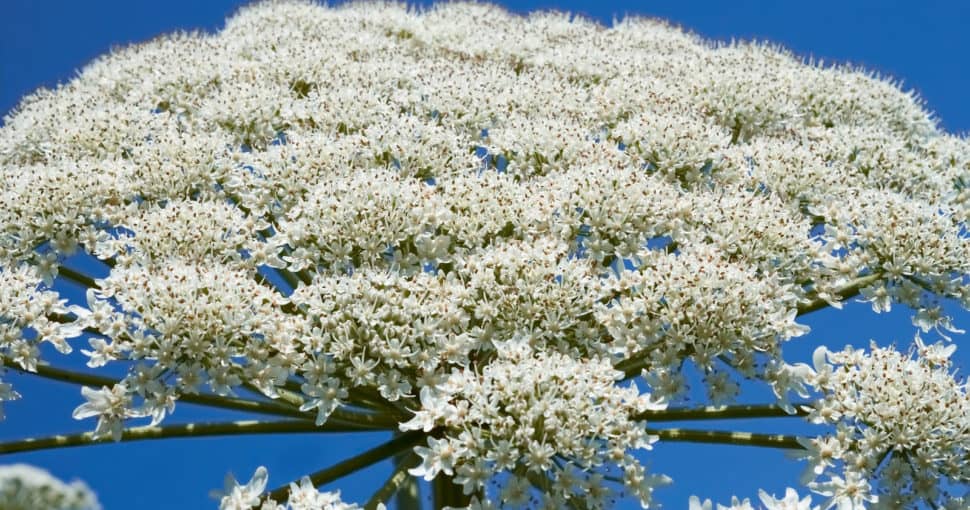There are numerous advantages to having plants around, including the ability to beautify our surroundings while also serving as sources of food, scent, and medicine. However, there are several plants that can be dangerous if they are utilized incorrectly or if they are accidentally eaten or touched. Anyone with little children or dogs should become familiar with these potential toxic plants in the garden in Indiana.
Contents
- 1. Poison Ivy (Toxicodendron Radicans)
- 2. Daffodils (Narcissus)
- 3. Dumb Canes (Dieffenbachia)
- 4. Bleeding Heart (Lamprocapnos)
- 5. Azaleas (Rhododendron)
- 6. Autumn Crocus (Colchicum Autumnale)
- 7. Milkweed (Asclepias)
- 8. Snow-on-the-Mountain (Euphorbia Marginata)
- 9. Larkspur (Delphinium)
- 10. Rhubarb (Rheum Rhabarbarum)
- 11. Flame Lily (Gloriosa Superba)
- 12. Oleander (Nerium Oleander)
- 13. Foxgloves (Digitalis)
- 14. Mayapples (podophyllum peltatum)
- 15. Water Hemlock (Cicuta)
- 16. English Yew (Taxus Baccata)
- 17. Golden Ragwort (packera aurea)
- 18. Wisteria
- 19. Lily of the Valley (Convallaria Majalis)
- 20. Giant Hogweed (Heracleum Mantegazzianum)
- 21. Poison Sumac (Toxicodendron Vernix)
- 22. Stinging Nettle (Urtica Dioica)
- 23. Spurges (Euphorbia)
- 24. Angel’s Trumpet (Brugmansia)
Hiking and exploring the outdoors are popular pastimes in Indiana. Brown County State Park, Lake Michigan, or Eagle Creek State Park all have something to offer. Regardless of what you’re doing, there’s something for everyone. Our forests and parks are beautiful, but it’s also easy to forget that some of the plants in our state can be threatening—to human beings.
Identify the plants in your home and yard so that you are able to avoid potentially dangerous circumstances or, at the very least, respond quickly when accidents do occur. Your local university, garden centers, or nurseries may be able to help you identify your plants if you don’t know what they are.
We’ve compiled a list of 24 poisonous plants in Indiana in order to keep you safe.
1. Poison Ivy (Toxicodendron Radicans)
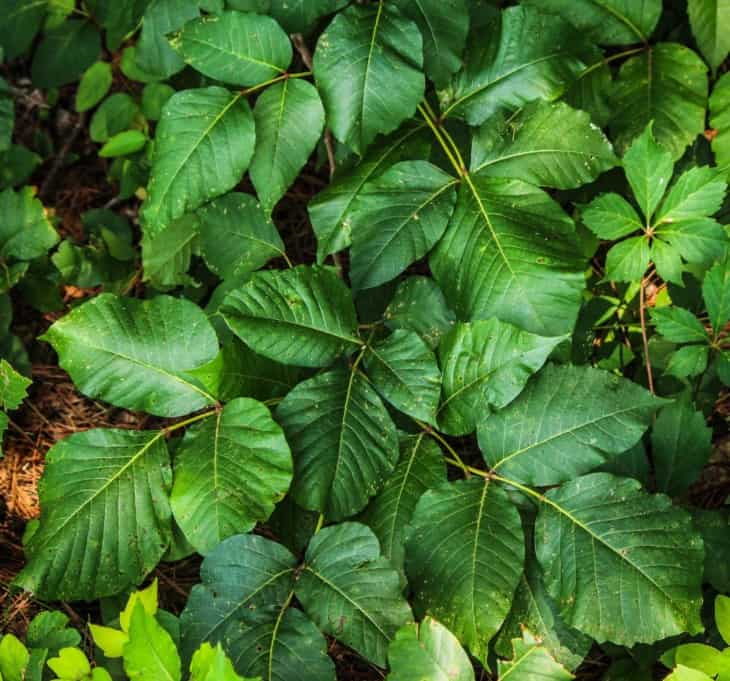
Poison ivy is a very itchy plant that can be found growing in a variety of locations, from roadside ditches to home flower beds. The plant’s leaves are formed up of three-leaflet groups with plain or ruffled edges, depending on the variety. When poison ivy is touched, it causes blotching, blisters, itching, and pain. All sections of the plant release oil that has an adverse effect on human skin.
2. Daffodils (Narcissus)
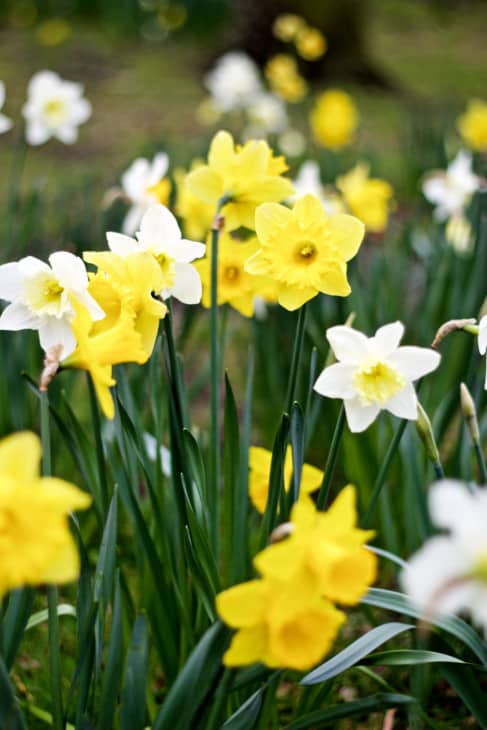
From one to twenty blooms per stem, about 50 different kinds of spherical plants are in the species of Narcissus. All species have strap-shaped, semi-green, 6- to 30-inch long leaves. Most species of this plant can handle a wide range of soil types, but they thrive in wet, fairly fertile soil that drains well. Full sunny or partial shade is ideal for daffodils.
3. Dumb Canes (Dieffenbachia)
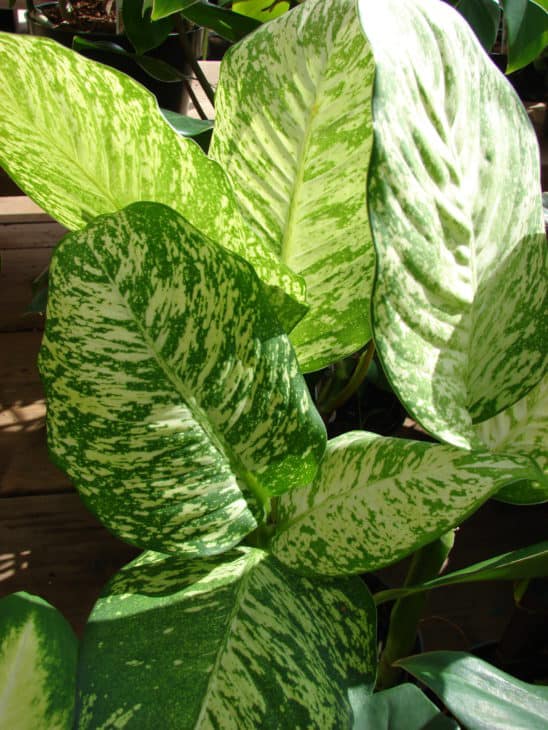
It is common for Dieffenbachia leaves to be a blend of white, yellow, and green, depending on the species. Dieffenbachia plants contain toxins that can cause swollen and inflamed respiratory tracts. Acne, inflammation, redness and dermatitis can occur when the skin is exposed to chemicals. Eye discomfort and corneal abrasions are possible consequences of touching the plant and then rubbing your eye.
4. Bleeding Heart (Lamprocapnos)
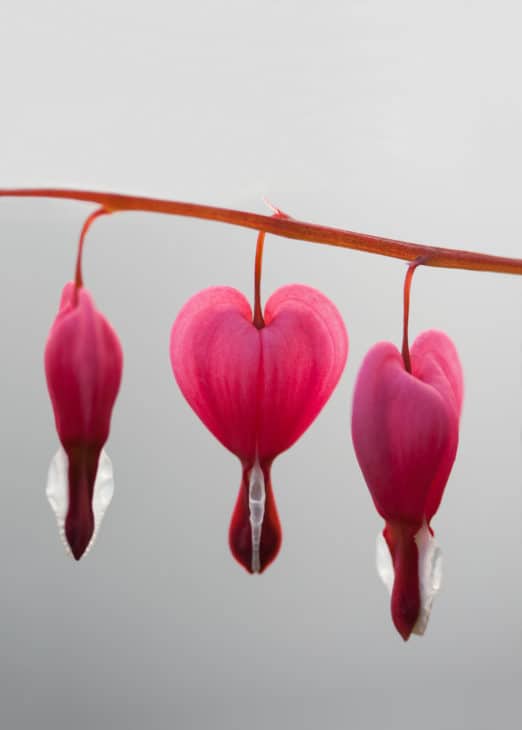
Bleeding hearts are native to temperate forests in North America and Eastern Asia, where they thrive. If swallowed, all components of the plant are considered toxic. Unlike dogs and horses, people are rarely poisoned to the point of death. When humans consume excessive amounts of the poisons in bleeding hearts, it can lead to liver damage and seizures.
5. Azaleas (Rhododendron)
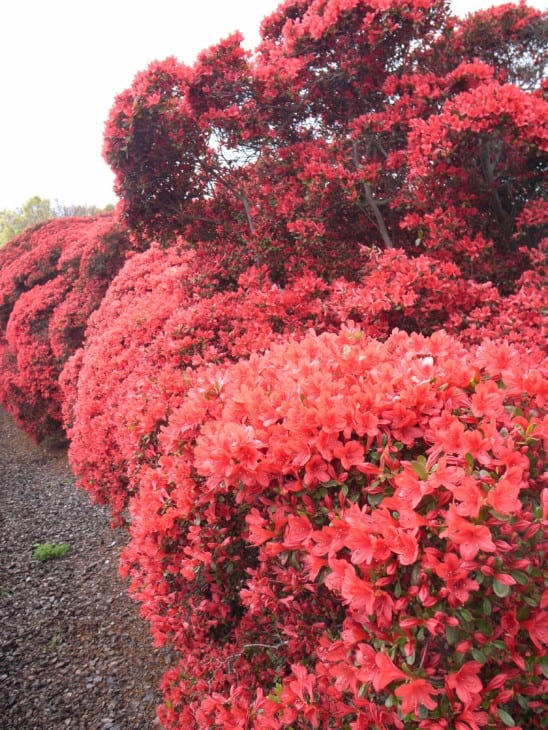
Azaleas are beautiful flowers with funnel-shaped blooms and five stamens. Unfortunately, they are dangerous, and they should be handled with care. When little fragments of azalea are consumed, it is likely that they may cause serious poisoning. Significant quantities of any part of this plant might result in life-threatening symptoms if consumed.
6. Autumn Crocus (Colchicum Autumnale)
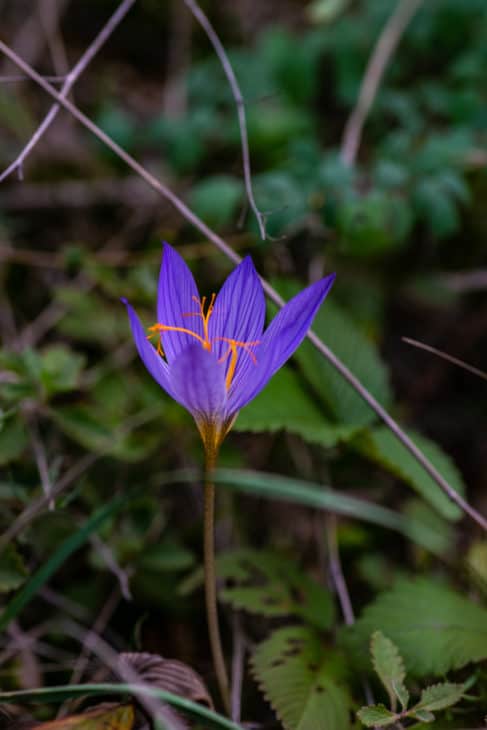
Autumn Crocus’s leaves resemble those of a small, deep green tulip or possibly a lettuce head. A native of southern Europe, this plant thrives on chalky and neutral soils in meadows and woodland clearings. It is toxic and can induce burning in the throat and mouth, diarrhea, vomiting, liver and kidney issues, blood disorders, nerve damage, panic, organ damage, and death.
7. Milkweed (Asclepias)
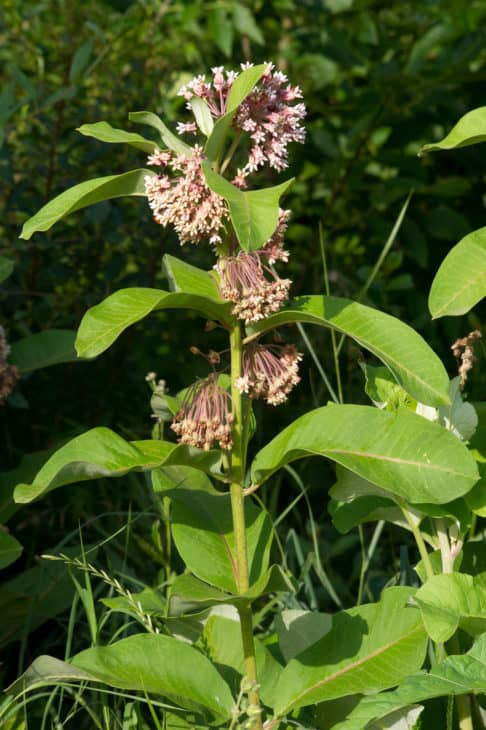
Even though the size and shape of milkweed fruits or pods might vary, they are easy to recognize as milkweed. The pods split longitudinally and release the seeds once they are grown. Poisonous portions of the plant include the leaves and stems. Milkweed can cause damage at any time, but the entire growing season is when it is most deadly. There are a number of milkweed species that are toxic to a variety of animals.
8. Snow-on-the-Mountain (Euphorbia Marginata)
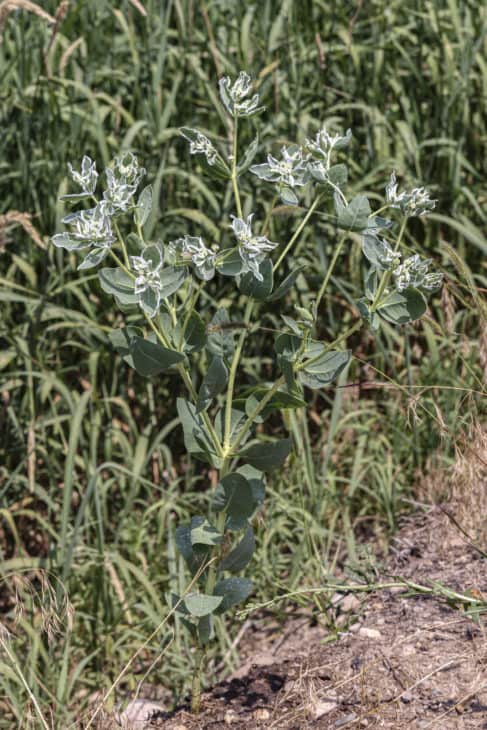
Summer annual snow on the mountain, also known as Euphorbia marginata, has alternating leaves and blooms in the shape of white cup in the summer. Extracts generated from these plants, whether fresh or dried can be hazardous if consumed by humans or animals. Ingestion can cause inflammation or burning of the throat, mouth, and esophagus as a result of the bacteria. Eyes, skin, and sinuses may get irritated as a result of contact with the plant.
9. Larkspur (Delphinium)
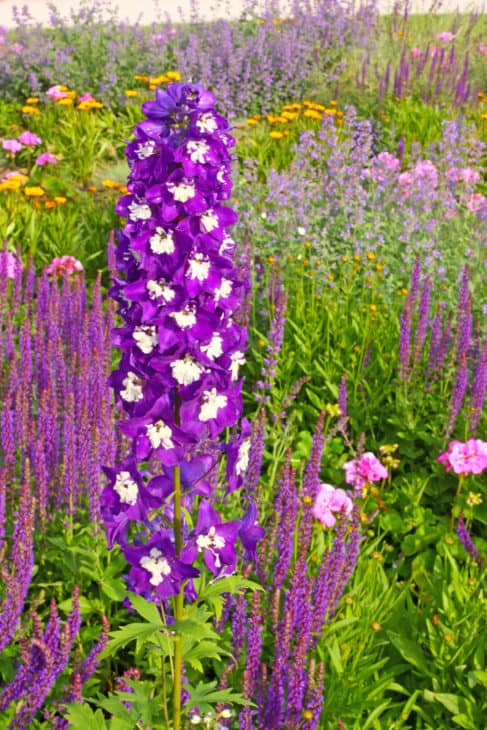
Larkspur has ruffled blue blooms that appear on the upper third of a stem, and it is native to the Mediterranean region. You can find this weed on grassy slopes and in desert areas. Each and every portion of every larkspur species is deadly, and it is this poison that causes neuromuscular paralysis, which can lead to respiratory failure, bloating and death in some cases.
10. Rhubarb (Rheum Rhabarbarum)
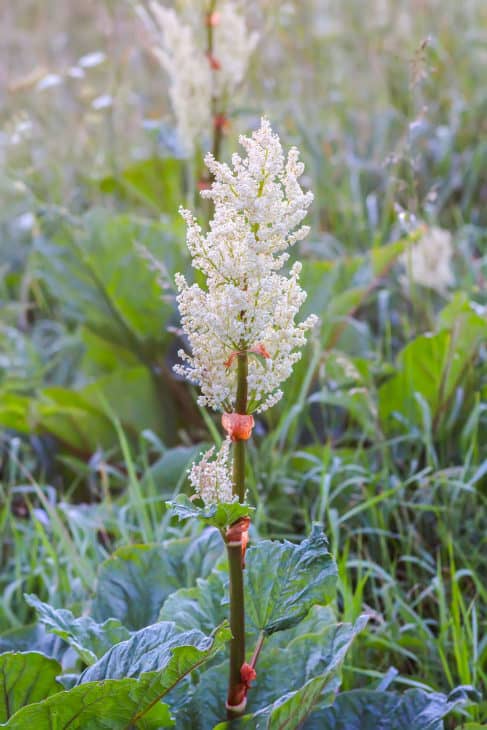
There are several regions of the world where rhubarb grows, such as the mountains and temperate regions of Northeast Asia. The stalks are tall and fibrous, ranging in color from dark red to light green. Vomiting and diarrhea are the most common rhubarb poisoning symptoms, and they go away quickly. Difficulty swallowing, sore throat, vomiting, nausea, diarrhea, and stomach pain are among the more serious causes.
11. Flame Lily (Gloriosa Superba)
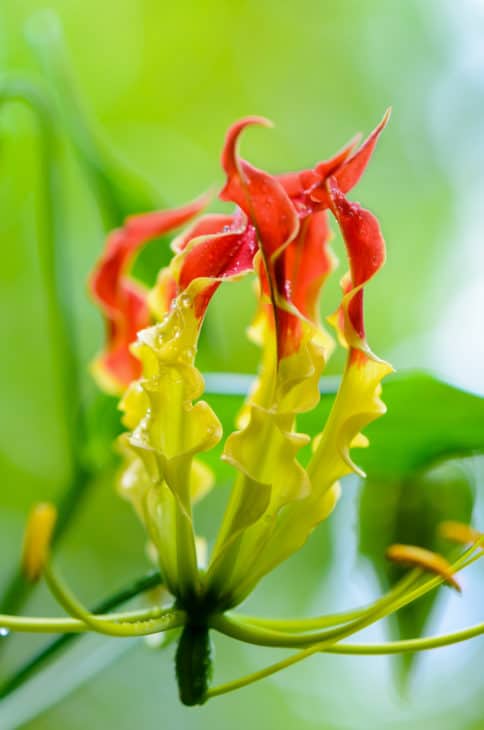
They have a lance-shaped shape with a tendril at the end of their stems, and they are usually brilliant red or orange in color when they mature. If swallowed, this plant can cause both human and animal deaths. Murder, suicide, and animal abuse have all been committed through this plant. The tuberous rhizomes, in particular, are an extremely poisonous part of the plant.
12. Oleander (Nerium Oleander)
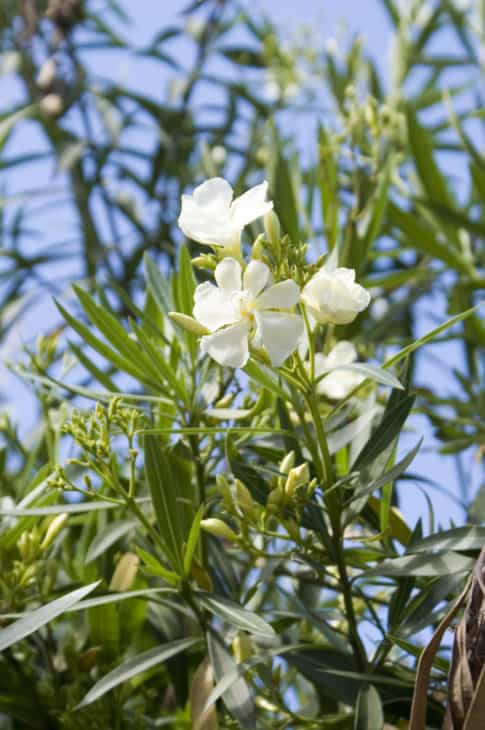
Oleanders are highly sought-after floral plants because of their brilliant blooms and ability to endure salt spray and drought. These bushes, on the other hand, carry cardiac glycosides, which are proven to be toxic to humans. If humans or animals consume the leaves, roots, stems, or petals of this plant, they may experience a variety of dangerous, and in some cases fatal, reactions.
13. Foxgloves (Digitalis)
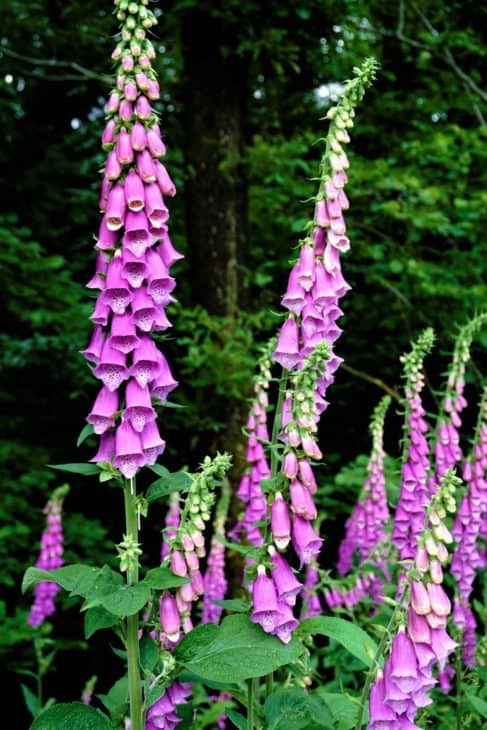
This plant, with its majestic spikes of purple and pink flowers, can be found all over the state of Indiana, including woodlands, along highways, and in trees and bushes. Cardiac glycosides and digitalis are found in this plant, which can severely affect the heart. Even though there have only been a handful of documented cases of foxglove poisoning, this plant is still known to be toxic.
14. Mayapples (podophyllum peltatum)
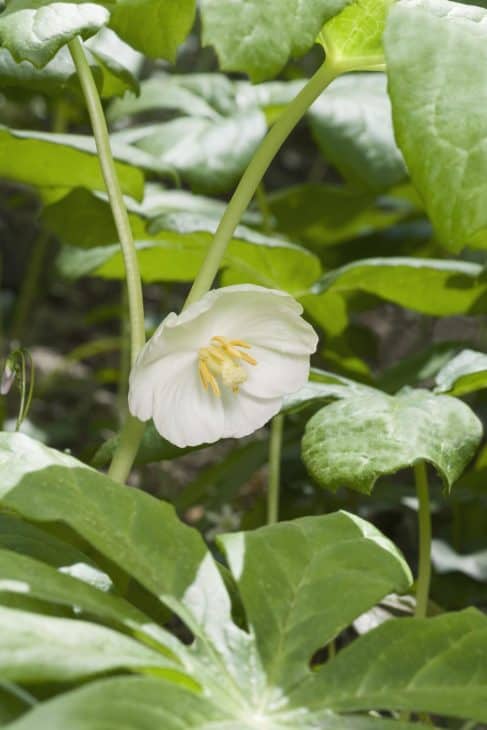
To recognize mayapple in forest preserves, simply look for the bright yellow flowers. During the spring, it forms a cluster. It grows to a height of about a foot, and its leaves are the size of an average hand. Except for the mature yellow fruit, the entire plant is lethal. Even the seeds of the ripe fruit are poisonous, so you can eat a small amount of it but only when it is fully ripe.
15. Water Hemlock (Cicuta)
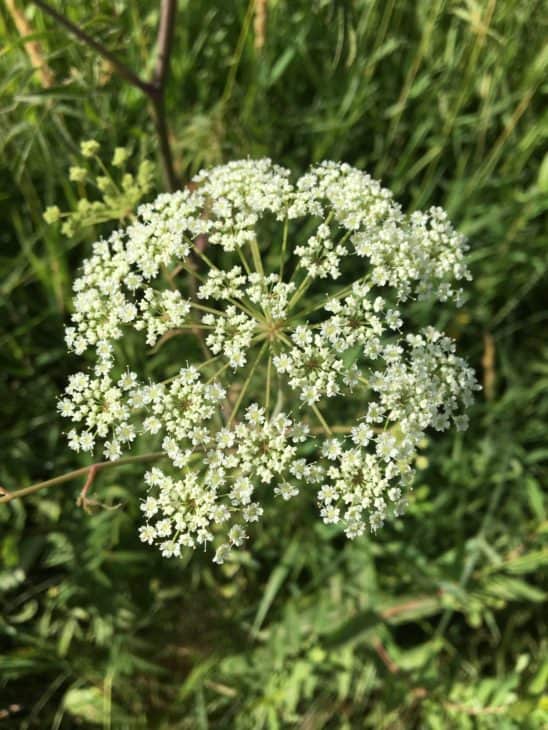
Water hemlock is perhaps the most poisonous plant found in North America. Only a minimal amount of the plant’s deadly ingredient is enough to cause cattle or human poisoning. Irrigation ditches and streamsides are all good places to find this plant. Water Hemlock is so poisonous that it was used by tribes to poison the tips of their arrows for shooting animals.
16. English Yew (Taxus Baccata)
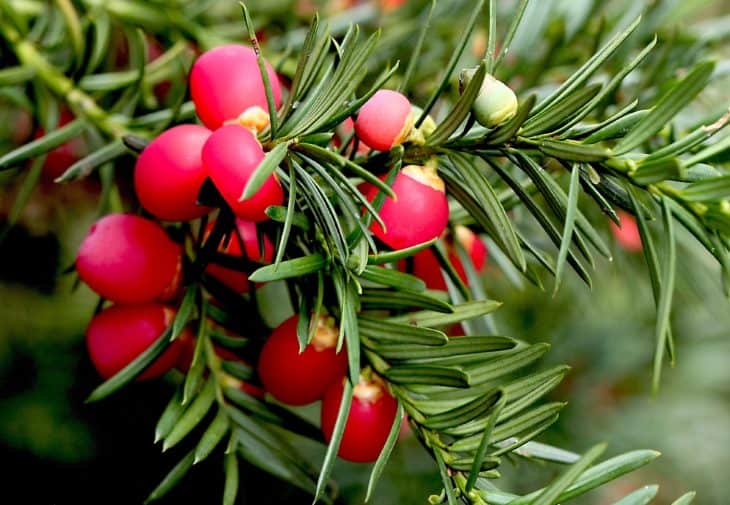
Taxus baccata, generally known as English yew, is a shrub that is largely grown for its decorative qualities. This plant contains toxins that can be ingested through inhalation and contact with the skin; even a small amount of its leaf can trigger cardiac arrhythmias and result in death due to cardiogenic shock if consumed orally.
17. Golden Ragwort (packera aurea)
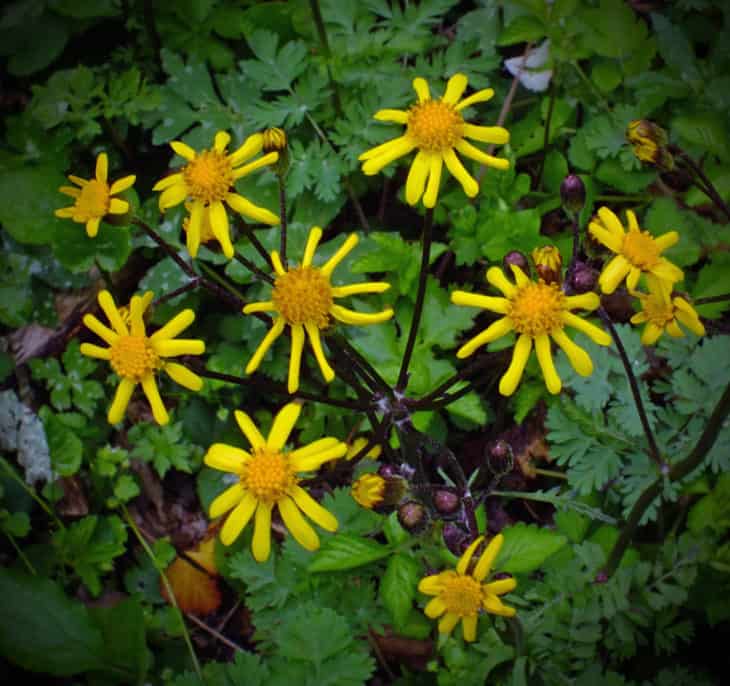
Ragwort contains poisons known as pyrrolizidine alkaloids, which are toxic to the body. When consumed in large enough numbers, they can induce liver toxicity in horses and other livestock. It is a poison that builds up over time and eventually results in symptoms before death. Ragwort plants have straight, buttercup yellow flowers and they bloom from late summer to mid-autumn. It could be better to plant a Ragwort alternative instead.
18. Wisteria
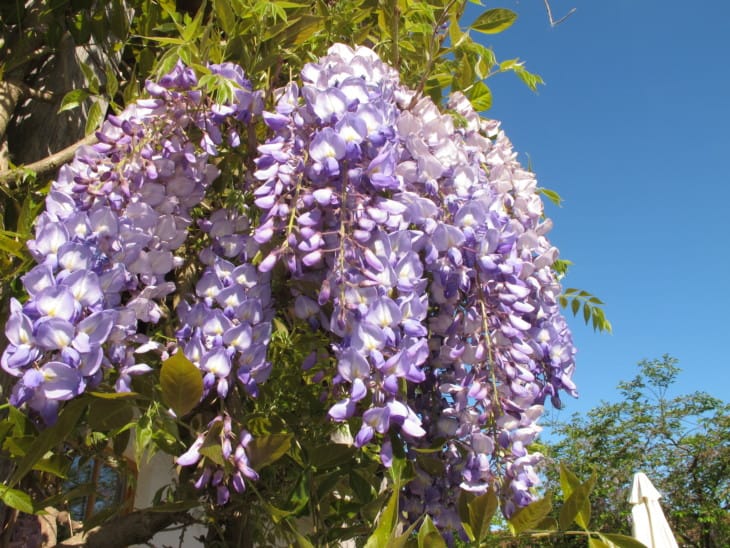
Flowing bundles of Violet, pink, white, or purple flowers appear on this plant in the spring and summer. All components of this plant are known to be toxic, with the seeds and pods being the most dangerous. Exposure to this plant has been known to result in catastrophic consequences such as stomach pain, diarrhea, oral burning, and vomiting are all common symptoms of this condition. See Wisteria alternatives.
19. Lily of the Valley (Convallaria Majalis)
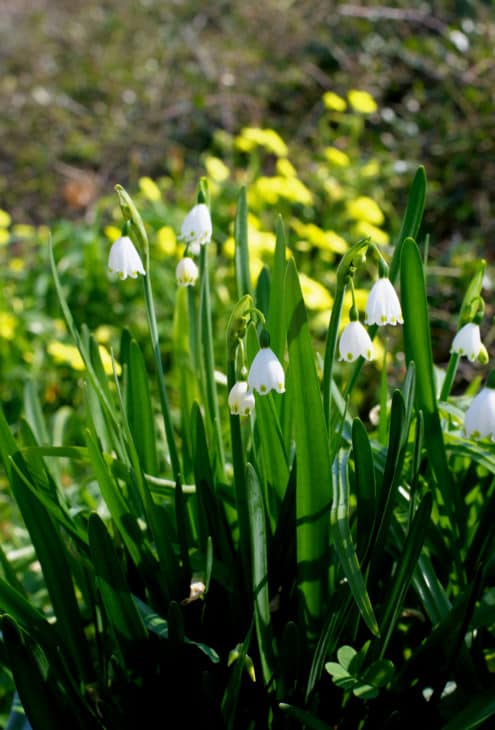
The lily of the Valley features white, sweet-smelling, bell-shaped flowers and orange-red berries that appear in the late spring. In order to prevent animals from consuming their seeds, the plant has developed a toxic defense. The entire plant, including the stems, leaves, blossoms, and berries, are highly toxic. Disorientation, tiredness, irritability, headaches, rashes, excessive salivation, rapid changes in heart rhythm, and even death, are just a few of the warning signs.
Alternatives: 9 Plants That Look Like Lily of the Valley
20. Giant Hogweed (Heracleum Mantegazzianum)
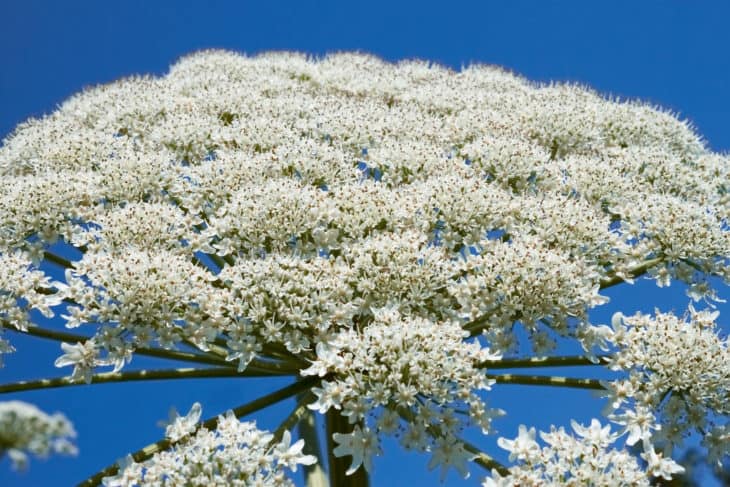
The giant hogweed plant has been discovered in St. Joseph Counties and Kosciusko. It can reach a height of 15-20 feet. Due to the presence of this plant’s sap, the skin becomes extremely sensitive to ultraviolet light, resulting in serious skin irritation and sometimes even blindness.
21. Poison Sumac (Toxicodendron Vernix)
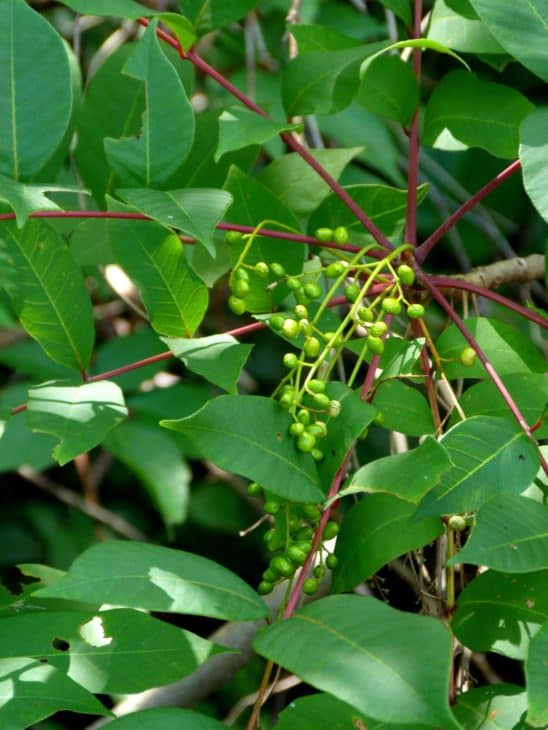
Although poison sumac is predominantly found in the state’s northeast, the plant prefers marshes, ponds, and other moist environments. The plant has red stalks and extended leaves that transition from green to bright orange to red-orange in color. Poison sumac’s oil makes all portions of the plant hazardous, causing symptoms such as itching, blistering, redness, and burning.
22. Stinging Nettle (Urtica Dioica)
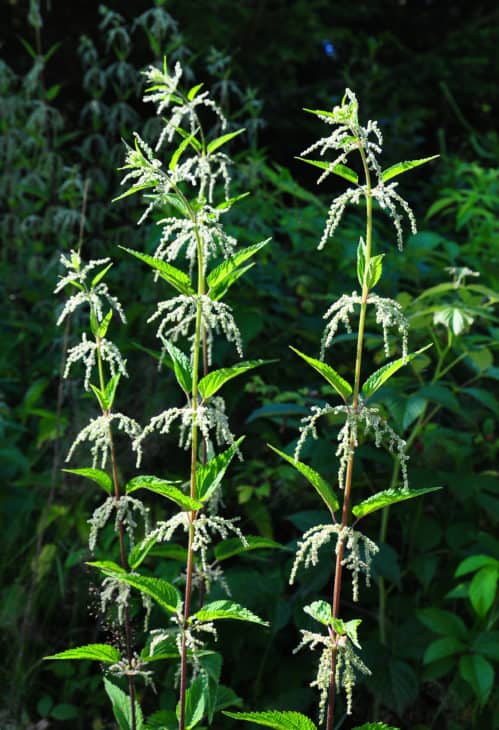
In Indiana, stinging nettle is prevalent in the woods, along river sides, and in waste areas. Itching and welts might result from coming into contact with stinging nettle. Stinging nettle spreads in groups and can grow to be fairly tall. It has unbranched stems and opposite leaves in the shape of an egg with serrated borders. The prickly hairs on the stem help you identify this plant.
23. Spurges (Euphorbia)
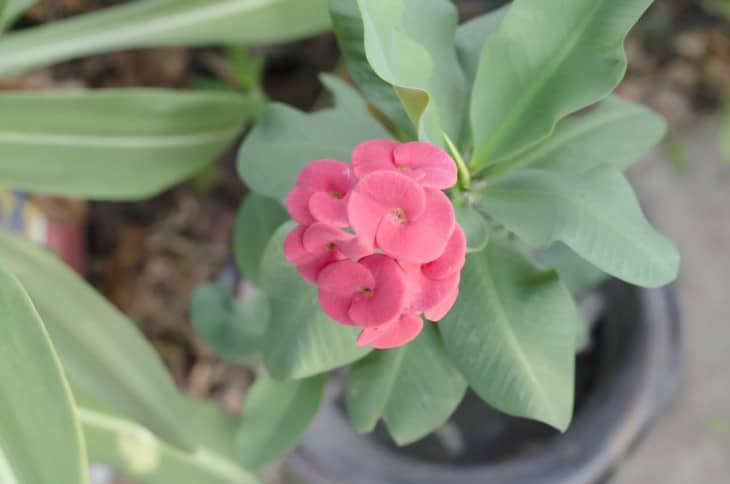
It is a toxic plant that may thrive in a variety of environments, including roadways, streams and irrigation canals, meadows, and prairie. Throughout the plant, a milky-colored toxin is present that can be poisonous to livestock and irritating to humans. Blisters, salivation, nausea, and vomiting may occur as a result of digestive system inflammation.
24. Angel’s Trumpet (Brugmansia)
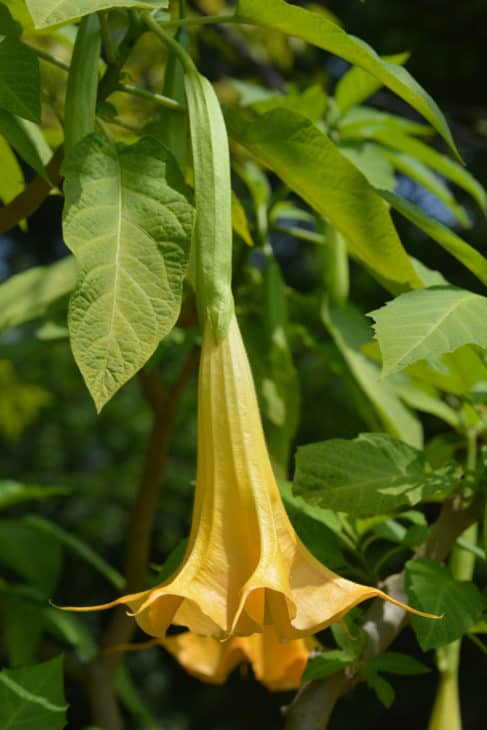
It’s not difficult to recognize an angel’s trumpet: It’s a big plant with many branches that can spread up to 30 feet in length, depending on the variety. Despite the fact that angel’s trumpet is only fatal when consumed, everything about this plant is extremely hazardous. The symptoms of angel’s trumpet poisoning are severe, and include hallucinations, confusion, muscle paralysis, and, in severe cases, heart attack.

